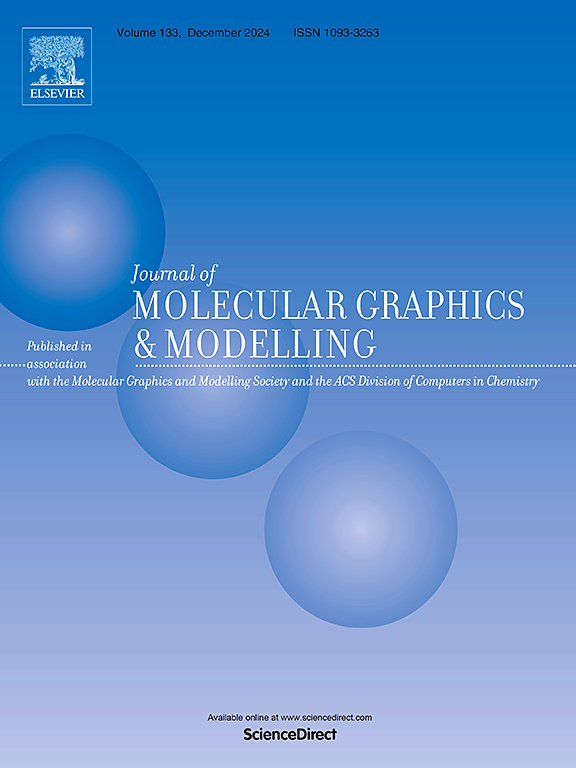Structural characterization of codon 129 polymorphism in prion peptide segments (PrP127-132) using the Markov State Models
IF 2.7
4区 生物学
Q2 BIOCHEMICAL RESEARCH METHODS
引用次数: 0
Abstract
The human prion protein gene (PRNP) consists of two common alleles that encode either methionine or valine residues at codon 129. Polymorphism at codon 129 of the prion protein (PRNP) gene is closely associated with genetic variations and susceptibility to specific variants of prion diseases. The presence of these different alleles, known as the PRNP codon 129 polymorphism, plays a significant role in disease susceptibility and progression. For instance, the prion fragment 127-132 (PrP127-132) has been implicated in the development of variant Creutzfeldt–Jakob disease (vCJD), due to the presence of methionine or valine at codon 129. This study aims to unravel the early structural changes brought by the presence of polymorphism at codon 129. Using molecular dynamics (MD) simulations, we present evidence highlighting a spectrum of structural transitions, uncovering the nuanced conformational heterogeneity governing the polymorphic behavior of the PrP127-132 chain. The Markov state model (MSM) analysis was able to predict several metastable states of these chains and established a kinetic network that describes transitions between these states. Additionally, the MSM analysis showed extra stability of the PrP-M129 polymorph due to less random-coiled motions, the formation of a salt bridge, and an increase in the number of native contacts. The pathogenicity of PrP-V129 can be attributed to enhanced random motion and the absence of a salt bridge.
基于Markov状态模型的朊病毒肽段(PrP127-132)密码子129多态性的结构表征
人类朊蛋白基因(PRNP)由两个共同的等位基因组成,它们在密码子129处编码蛋氨酸或缬氨酸残基。朊病毒蛋白(PRNP)基因密码子129多态性与朊病毒疾病的遗传变异和易感性密切相关。这些不同等位基因的存在,被称为PRNP密码子129多态性,在疾病的易感性和进展中起着重要作用。例如,朊病毒片段127-132 (PrP127-132)与变异型克雅氏病(vCJD)的发展有关,这是由于密码子129上存在蛋氨酸或缬氨酸。本研究旨在揭示密码子129多态性的存在所带来的早期结构变化。利用分子动力学(MD)模拟,我们提供了强调结构转变谱的证据,揭示了控制PrP127-132链多态性行为的细微构象异质性。马尔可夫状态模型(MSM)分析能够预测这些链的几个亚稳态,并建立了描述这些状态之间转换的动力学网络。此外,MSM分析表明,PrP-M129多晶由于较少的随机卷曲运动、盐桥的形成以及天然接触数量的增加而具有额外的稳定性。PrP-V129的致病性可归因于增强的随机运动和缺乏盐桥。
本文章由计算机程序翻译,如有差异,请以英文原文为准。
求助全文
约1分钟内获得全文
求助全文
来源期刊

Journal of molecular graphics & modelling
生物-计算机:跨学科应用
CiteScore
5.50
自引率
6.90%
发文量
216
审稿时长
35 days
期刊介绍:
The Journal of Molecular Graphics and Modelling is devoted to the publication of papers on the uses of computers in theoretical investigations of molecular structure, function, interaction, and design. The scope of the journal includes all aspects of molecular modeling and computational chemistry, including, for instance, the study of molecular shape and properties, molecular simulations, protein and polymer engineering, drug design, materials design, structure-activity and structure-property relationships, database mining, and compound library design.
As a primary research journal, JMGM seeks to bring new knowledge to the attention of our readers. As such, submissions to the journal need to not only report results, but must draw conclusions and explore implications of the work presented. Authors are strongly encouraged to bear this in mind when preparing manuscripts. Routine applications of standard modelling approaches, providing only very limited new scientific insight, will not meet our criteria for publication. Reproducibility of reported calculations is an important issue. Wherever possible, we urge authors to enhance their papers with Supplementary Data, for example, in QSAR studies machine-readable versions of molecular datasets or in the development of new force-field parameters versions of the topology and force field parameter files. Routine applications of existing methods that do not lead to genuinely new insight will not be considered.
 求助内容:
求助内容: 应助结果提醒方式:
应助结果提醒方式:


